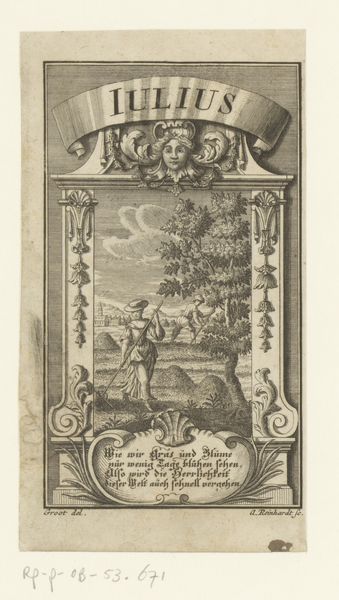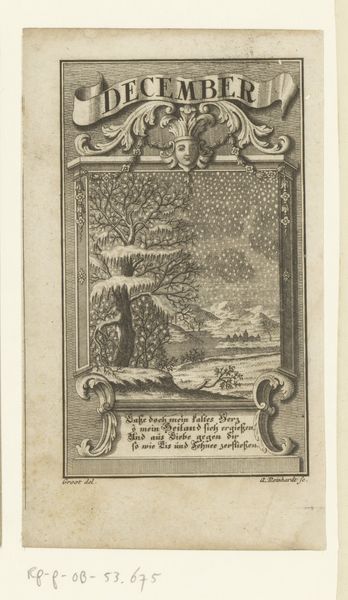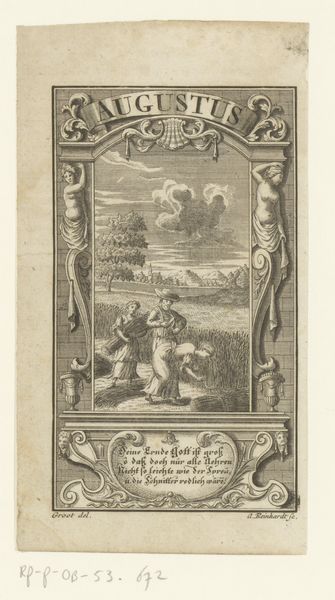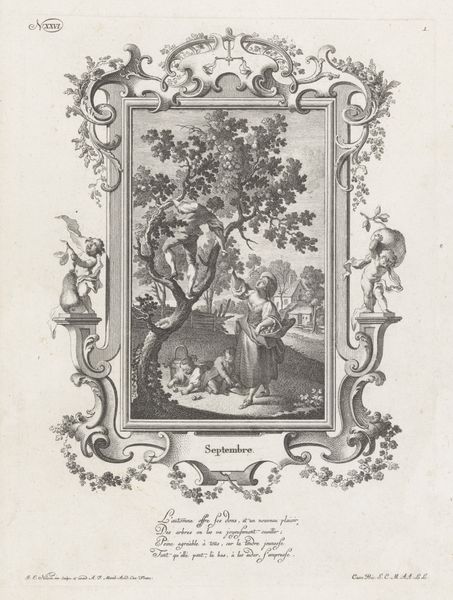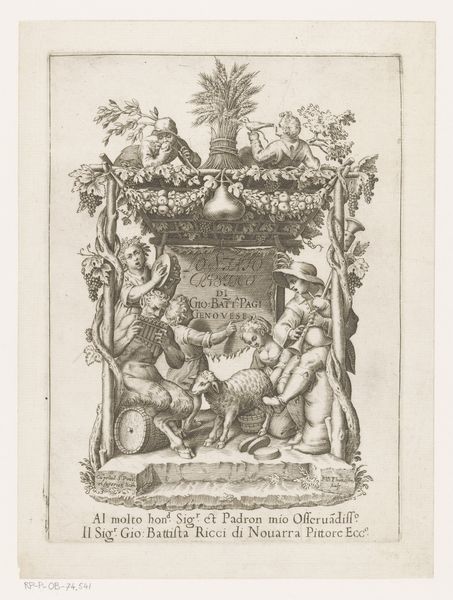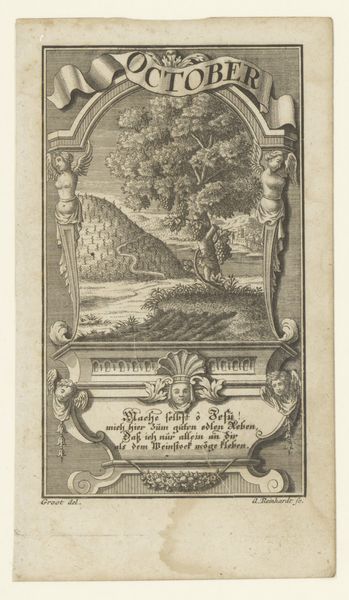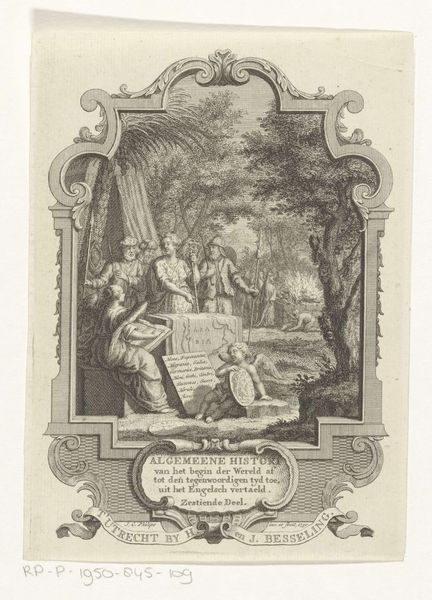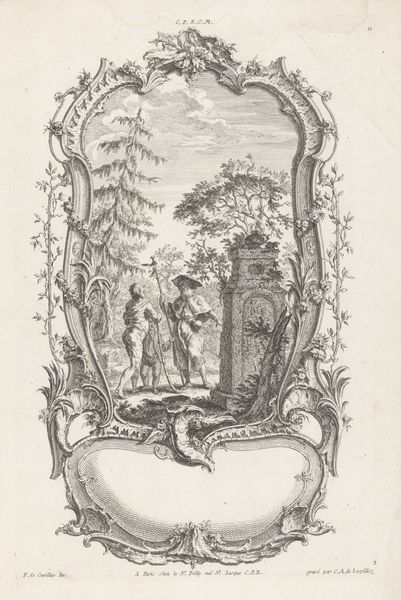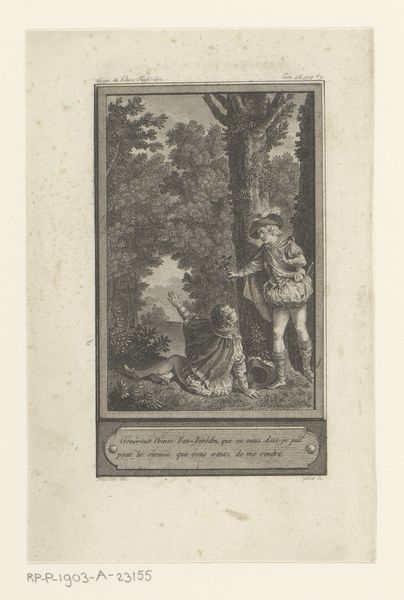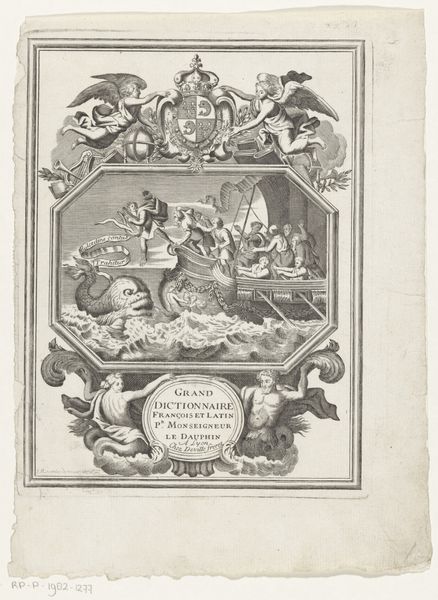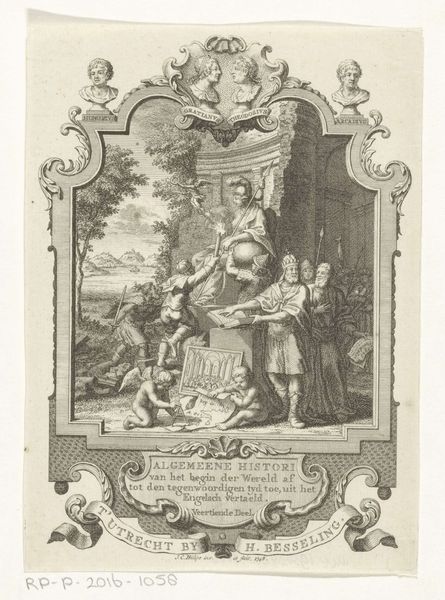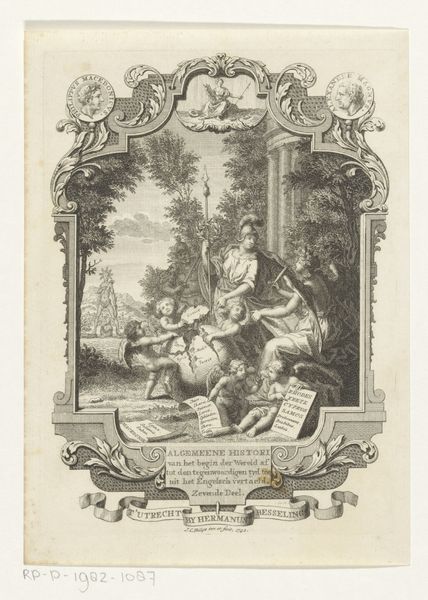
drawing, print, engraving
#
drawing
#
baroque
# print
#
old engraving style
#
landscape
#
figuration
#
genre-painting
#
engraving
Dimensions: height 196 mm, width 106 mm
Copyright: Rijks Museum: Open Domain
Editor: This engraving, titled "Kalenderblad September," was created between 1686 and 1752 by Andreas (I) Reinhard. It depicts a scene of people harvesting fruit, set within an ornate frame. It has a simple composition and detail for an "old engraving style". What can you tell me about it from a historical context? Curator: This print gives us insight into the socio-cultural values surrounding labor and the calendar year in the late 17th to early 18th century. The scene presents a very idealized version of harvesting, wouldn’t you agree? Editor: I would. Everyone seems quite peaceful. The landscape is lovely, with a city visible in the background. Curator: Exactly. Genre scenes like this served a purpose, often reflecting or reinforcing social hierarchies and values. Think about who would have purchased and displayed a calendar print like this. Do you imagine this reflecting the reality of agrarian labor for the vast majority of the population? Or projecting an aesthetic vision of agrarian life for an urban elite? Editor: So, it's less about documentation and more about presenting a particular perspective. Perhaps this print functions almost as propaganda, then? Curator: That's one way of looking at it. Visual imagery often shaped public perception, normalizing certain social orders and promoting specific ideologies. What about the text below the image? How does that play into this socio-political framing? Editor: The German inscription. It looks to be religious in tone - something about recognizing good trees by their fruit. It seems to connect agricultural work with faith, portraying harvesting almost as a sacred duty? Curator: Precisely. Combining seasonal labor with a religious proverb creates a potent message reinforcing social and spiritual obligations. Editor: That makes a lot of sense. I hadn't considered how multi-layered these seemingly simple calendar prints could be. Curator: Right, and by examining these objects we reveal what the image's social and political functions once fulfilled. Editor: It’s a lot more involved than I first thought. I'm learning that art's power extends way beyond its aesthetic value.
Comments
No comments
Be the first to comment and join the conversation on the ultimate creative platform.
